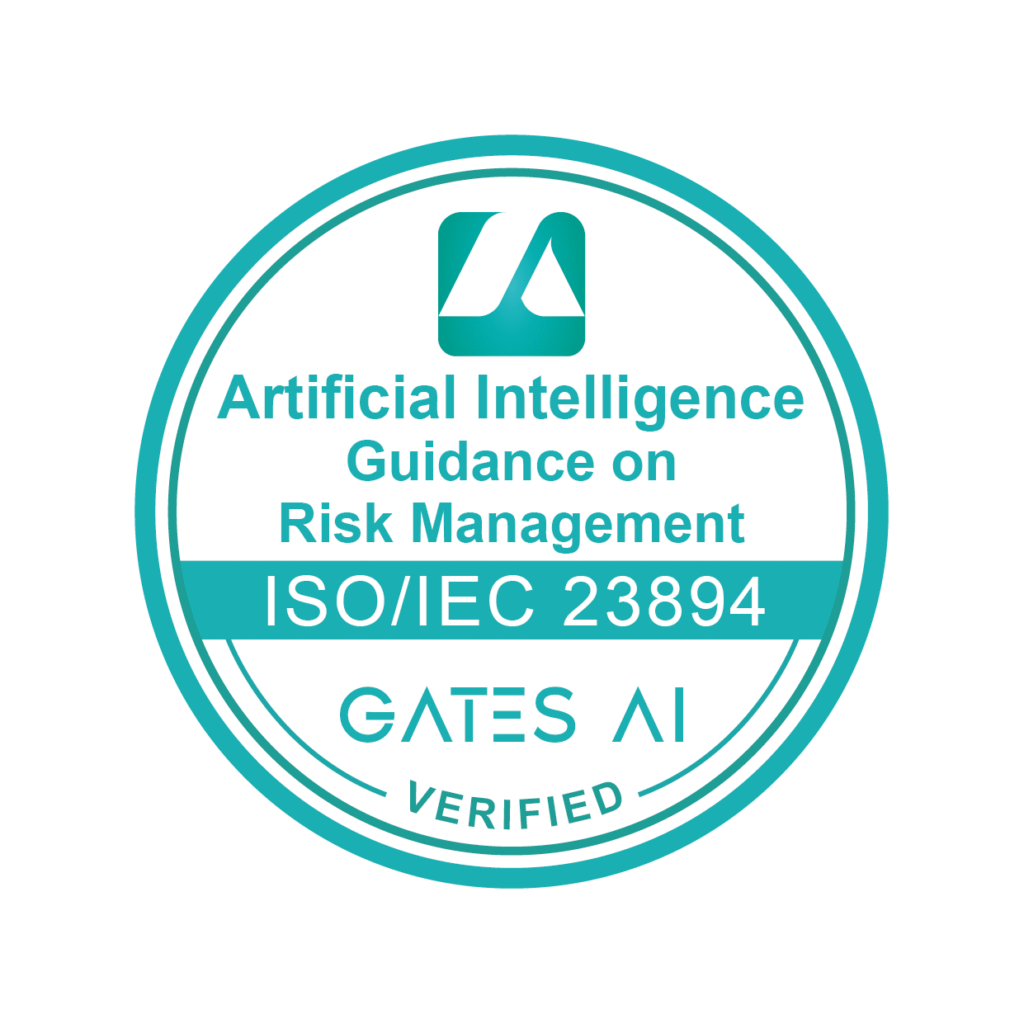ISO/IEC 23894
Information technology — Artificial intelligence — Guidance on risk management

- Our Expertise
What is ISO/IEC 23894?
Why is ISO/IEC 23894 important?
The ISO/IEC 23894:2023, an international standard that provides a framework for managing the unique risks associated with artificial intelligence (AI) systems throughout their lifecycle. It’s important because it helps organizations ensure their AI systems are developed and used safely, ethically, and responsibly, mitigating potential harms like algorithmic bias, privacy breaches, and autonomous system failures. By adopting this standard, organizations can build trust, ensure regulatory compliance, and gain a competitive advantage through robust, risk-informed AI governance.


Benefits
- Enhance their ability to manage AI risks effectively.
- Improve the reliability and performance of their AI models.
- Increase stakeholder trust in their AI initiatives.
- Better prepare for emerging AI regulations and compliance requirements.
What’s Covered
AI-Specific Risk Management Framework
Extends traditional risk management practices to address the unique uncertainties, biases, and unintended consequences of AI systems.
Integration with Organizational Governance
Aligns AI risk management with existing standards (like ISO 31000 for risk management) to ensure consistent, enterprise-wide governance.
Stakeholder Impact & Trust
Emphasizes evaluating risks on stakeholders (users, society, environment) and building trust through transparency, fairness, and accountability.
Lifecycle Risk Considerations
Covers risks across the entire AI lifecycle: from data collection and model training to deployment, monitoring, and retirement.
What’s IEC & ISO

International Electrotechnical Commission
The International Electrotechnical Commission (IEC) develops and publishes global standards for electrical, electronic, and related technologies.

International Organization for Standardization
ISO is an independent, non-governmental international organization. It brings global experts together to agree on the best ways of doing things.
Our Decal

Our Certificate

Benefits of Implementing ISO/IEC 23894
ISO/IEC 23894:2023 provides a vital framework for organisations to manage the risks associated with AI systems throughout their life cycle effectively.
By implementing this standard, organisations can unlock the full potential of AI while mitigating potential negative impacts.
- Frequently Asked Questions
Got Questions? We’ve Got Answers.
what is ISO/IEC 22989?
ISO/IEC 23894 is the international standard for Artificial Intelligence Risk Management. It provides guidance for identifying, assessing, and mitigating risks throughout the AI lifecycle to ensure systems are safe, reliable, and trustworthy.
Who should use ISO/IEC 23894?
It is designed for organizations that develop, deploy, or rely on AI systems. This includes technology providers, enterprises using AI in operations, government agencies, and businesses in regulated industries such as healthcare, finance, and transportation.
How does ISO/IEC 23894 relate to other standards?
ISO/IEC 23894 complements ISO 31000 (Risk Management) and works alongside AI-specific standards such as ISO/IEC 42001 (AI Management Systems). Together, they create a holistic framework for AI governance.
